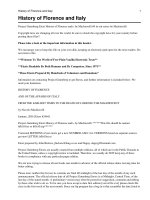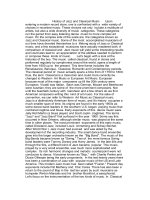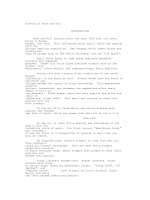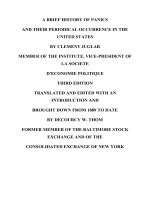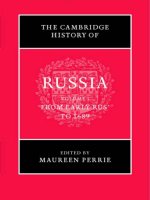3 history of costume and fashion, early america (2005)
Bạn đang xem bản rút gọn của tài liệu. Xem và tải ngay bản đầy đủ của tài liệu tại đây (3.09 MB, 65 trang )
A History of
Fashion and
Costume
Early
America
Paige Weber
Early America
Library of Congress Cataloging-inPublication Data
Copyright © 2005 Bailey Publishing Associates Ltd
Produced for Facts On File by
Bailey Publishing Associates Ltd
11a Woodlands
Hove BN3 6TJ
Project Manager: Roberta Bailey
Editor: Alex Woolf
Text Designer: Simon Borrough
Artwork: Dave Burroughs, Peter Dennis,
Tony Morris
Picture Research: Glass Onion Pictures
Weber, Paige.
A history of fashion and costume.
Early America/Paige Weber.
p. cm.
Includes bibliographical references and
index.
ISBN 0-8160-5947-0
1. Clothing and dress—South
America—History. 2. Clothing and
dress—North America—History.
3. Indians of South America—
Clothing. 4. Indians of North
America—Clothing.
GT675.W43 2005
391/.0098—dc 22
2004060886
Printed and bound in Hong Kong
All rights reserved. No part of this book may be
reproduced or utilized in any form or by any
means, electronic or mechanical, including
photocopying, recording, or by any information
storage or retrieval systems, without permission in
writing from the publisher. For information contact:
Facts On File, Inc.
132 West 31st Street
New York NY 10001
Facts On File books are available at special
discounts when purchased in bulk quantities for
businesses, associations, institutions, or sales
promotions. Please call our Special Sales
Department in New York at 212/967-8800 or
800/322-8755.
You can find Facts On File on the World Wide
Web at:
The publishers would like to thank the
following for permission to use their
pictures:
Ancient Art and Architecture: 9
(bottom)
Art Archive: 8, 9 (top), 13, 15
(bottom), 16, 18, 19, 20, 21 (both),
22, 24, 26, 27, 28, 29 (top), 30, 33
(both), 34, , 36, 41 (left), 42, 48, 51
Bridgeman Art Library: 10, 11, 17, 29
(bottom), 31, 46, 53 (left)
Colonial Williamsburg Foundation: 53
(right), 56, 57, 58
Peter Newark: 41 (right), 52, 55, 59
South American Pictures: 25
Topham: 12, 37, 38, 39, 44, 45, 49 (both)
Werner Forman Archive: 6, 7, 15 (top)
Contents
Introduction
5
Chapter 1: The Incas
6
Chapter 2: The Maya
12
Chapter 3: The Aztecs
16
Chapter 4: The Spanish and the Portuguese
26
Chapter 5: The Native Americans
34
Chapter 6: The British and French Colonies
40
Chapter 7: American Colonial Style
52
Timeline
60
Glossary
61
Further Information
62
Index
64
Introduction
Throughout the sixteenth and seventeenth centuries, explorers
left Europe to search for westward sea routes to Asia. Instead
they discovered the Americas, vast continents filled with
unknown civilizations and treasures. Some of these native
civilizations had developed into powerful empires.
After Christopher Columbus discovered gold on Hispaniola in
1492, Spanish and Portuguese explorers traveled to the
Americas to search for more gold.With their superior steel
weapons, they conquered the native peoples and took their
precious treasures back to Europe.
Three great civilizations existed in Central and South America
when the Europeans arrived: the Incas, the Maya, and the
Aztecs. None of them had written languages, but their artwork
and hieroglyphics, plus the accounts of European explorers,
give us clues today about their societies and styles of clothing.
European explorers quickly understood that clothing was an
important indicator of status among Native Americans. A
person from any civilization could be judged instantly by the
richness of his cloth, rareness of his jewelry, and magnitude of
his headdress.The rulers were obvious.
English and French colonists settled in North America for
many reasons. Some traded furs with the Native Americans,
and others, such as the Pilgrims and Puritans, established
colonies for religious freedom.Their clothing often asserted
their group identities.
Though the clothing worn by these civilizations—European
and Native American—differed greatly, they all shared a
common interest in costume.The desire to dress up, to
decorate the body, and to convey wealth and identity through
clothing was common to every early American society.
Chapter 1: The Incas
Cloth and Culture in the Andes
inely woven textiles have been central to the social,
political, and economic lives of the people
inhabiting the Andes mountains of South America for
more than five thousand years.The Inca Empire rose to
power there around 1200 CE, and at its height in the
fifteenth century it ruled over a region that stretched
from modern Columbia to Chile, and from the Pacific
Ocean to the Amazonian rainforest. Cuzco, the central
city of Inca civilization, was rich, with great buildings
decorated with sheets of gold, and noblemen wearing
headdresses encrusted with jewels and topped with
exotic feathers.
F
Throughout the Inca Empire,
weavings were the most important
trading commodity and the most
highly prized possessions. Gifts of
specially woven cloth strengthened
social and political ties between
leaders.The Incas even worshiped a
deity of textiles, Aksu Mama, to
whom they made sacrifices each year.
Fibers, Dyes, and
Looms
Inca women wove cloth
on backstrap looms, as
shown in this sixteenthcentury Peruvian
illustration.
6
The Incas drew upon thousands of
years of weaving tradition and
knowledge. Brown and white cotton
was cultivated in the Andes as early as
3800 BCE. Portable backstrap looms
were used from 2500 BCE onwards.
Camelid fibers were introduced into
cloth in the ninth century BCE. In
Inca society, clothes made from alpaca
hair were the most common. Llama
hair produced the roughest wool, and
the silky hair of the wild vicuña was
highly prized.
To color these yarns, the Incas used
leaves, fruits, berries, lichen, tree bark,
and minerals to make vivid dyes that
did not fade or bleed.The cochineal
insect was crushed to produce
beautiful red, purple, and black dyes.
Weavers used backstrap looms to
create delicate belts and headbands.
Horizontal and vertical looms were
used to produce larger textiles and
tapestries.
Symbolism
The Incas did not have a system of
written language. Instead they used
symbols to convey complex
information.They wove geometric
patterns into their clothing to
represent calendars, religious festivals,
The Incas
magical beliefs, and regional loyalties.
For example, a diamond pattern
represented Inti, the sun god. A
double-headed snake pattern
honored the god Amaru.The most
luxurious garments were decorated
with tocapus, small figures repeated
within a larger geometric pattern.
Even ordinary garments had
symbolic value: farmers carried their
produce in bags made of striped
cloth that indicated through its
patterns what was held inside.
until it was used as payment for
soldiers or administrative officials,
who turned it into clothing.
Status and Society
Weaving was central to the economy
of the Inca Empire. All people were
required to pay tax to the rulers in
the form of labor, called mit’a, often
by weaving cloth. Specialist male
weavers called cumbicamayos lived only
to embroider cumbi, fine cloths of
alpaca and vicuña fibers, which were
used as diplomatic gifts by the
nobility.The finest fabrics included
brocades and gauzes decorated with
precious metals or rare seashells.
Women of all ranks spun yarns, wove
cloth, and created accessories such as
ponchos, belts, coca bags, and
shoulder cloths. Most cloth was
produced for the Inca rulers, who
stored it in government warehouses
This Inca cloth, with its many colors and
geometric patterns, was worn as a symbol of
high social status.
Mummy Bundles
Important Incas were buried with fine, embroidered cloths. These sacred fabrics were
created specifically for this purpose and were intended to accompany the wearer into the
next world. Some nobles were mummified and buried in mummy bundles: mummies
wrapped in layers of textiles, and topped with false heads bearing masks or wigs. These
bundles would contain one large black cloth and as many other fine, colored textiles as
wealth would allow.
7
Inca Clothing
This Inca nobleman wears
an expensive embroidered
tunic, a large headdress,
and gold earrings.
Throughout the Inca Empire, people
at all levels of society wore the same
style of garments, but the cloth from
which these garments were made
revealed the wearers’ wealth and
origins. In the warm coastal lowlands,
the Incas preferred cotton clothing,
which kept their bodies cool.
Inhabitants of the colder mountain
regions wore clothes made of alpaca
or llama wool. On their feet the Incas
wore grass shoes or llama leather
sandals bound with brightly colored
wool fastenings.
The Inca government supplied some
clothing to its subjects: couples were
given new garments from the official
warehouses when they married, and
older people without families
received enough clothing to survive.
Tunics and Tocapus
Inca men wore a loincloth, a long
strip of cloth that went through the
legs and wrapped around the waist to
secure like a belt. In hot weather they
wore this alone. On top, men wore a
sleeveless, knee-length tunic made
from one piece of cloth, with a slit
cut through the middle to make
space for the head.The waistlines of
Inca tunics were often decorated
with tocapus, which revealed
information about the wearer, such as
his wealth, birthplace, or status. Men
also wore embroidered sashes around
the waist. In cold weather and on
formal occasions, men wore a loose
cloak over a tunic, tying its two
corners in front, at the neck. Instead
of using pockets, men carried their
tools, amulets, and coca leaves in
small bags.
Warriors wore headdresses that were
appropriate for their rank. Ordinary
Inca helmets were round, made from
wood or cane, and decorated with
small braids and crests. Officers wore
elaborate, feathered headdresses with
ornamental badges.
Sashes and Shawls
Women wore a long, sleeveless dress
that reached from the neck to the
ankles and was open at the sides to
ease walking.The most valuable
8
The Incas
The Incas prized cloth
decorated with repeated
geometric patterns called
tocapus.
dresses had delicate, colorful tocapus
woven into the cloth around the
waist.Women could also wear a sash
decorated with tocapus around the
waist to embellish a dress. Around the
shoulders, women wore a square,
draped shawl, which they fastened
across the breast with a shawl pin
called a tupu (see panel). Peasant
women used these shawls to carry
produce or small children.
Headbands
Ordinary Inca men wore their hair
long in the back and trimmed into a
neat fringe at the front. Around the
head they wore a narrow, woven
headband.The Incas had many
different types of headbands, woolen
caps, and feathered headdresses,
according to their regions and status.
Women wore their hair long and
parted down the middle, and often
twisted it into fine plaits.They cut it
only at funerals.Women wore a
headband similar to the men’s, and
noblewomen also wore a large piece
of folded cloth over this.
Archeologists have found bronze
mirrors at Inca sites, and also bronze
tweezers, which they believe were
used to remove unwanted facial hair.
Shawl Pins
Inca women used long, straight metal pins called tupus to fasten all of
their outer garments. Tupus were made from bronze, copper, silver, or
gold. One end of a tupu was sharp and the other was decorative. The
decorative end could be shaped like an animal or a human figure. Most
often, it took the shape of a half-moon, and was made of metal so thin
and sharp that it could be used as a knife.
Manco Capac, the first
Inca ruler, at the sun
festival that he initiated.
9
Inca Aristocracy
The Inca rulers enjoyed the softest
garments covered in tocapus, the most
precious jewelry, and the most
extravagantly plumed headdresses.
Entitlement to wear embellishments
like feathers, rare shells, turquoise,
gold, and silver was reserved
exclusively for royalty, the nobility,
and the highest-ranking military
officers. People from all over the Inca
Empire sent tributes of rare clothing
and jewelry to the emperor, and
certain fabrics, feathers, and colors
were claimed for his use alone. Royal
and noble Inca people groomed
themselves well, often bathing in
private bathtubs decorated with
colorful cut stones.
The Sapa Inca
The first Inca ruler Manco Capac is portrayed wearing enormous, spiralling,
gold earrings and a richly colored robe.
Ear Plugs
Wearing enormous plugs in the lower part of the ear,
close to the lobe, was a sign of great status among
Inca noblemen. Young noble boys received their first
ear piercings and ear plugs during the annual Splendid
Festival, when they were first recognized as adults. The
materials, colors, and size of a man’s ear plugs
indicated his status. These ear plugs were therefore
made as large as possible, and were composed of
precious metals and rare stones. Through wearing
them, noblemen developed stretched ears. The
Spanish conquistadors called the Inca nobility
orejones, or “big ears.” Within Inca society, however,
these large ears were considered prestigious.
10
The word Inca applies to the Inca
people, and also to their emperor.
The Sapa Inca, as he was known,
wore a new outfit every day. He very
rarely wore any garment more than
once. Instead, after he wore a
garment, it was stored for one year
and then burned in a special
ceremony.The Sapa Inca wore not
only vicuña hair tunics decorated
with rare shells, beads, feathers, and
gold threads, but also clothes made
from the rarest of fibers, such as bat
hairs. Many of his clothes were
woven in temples by the Virgins of
the Sun, secluded women chosen for
this purpose at the age of eight.
The emperor wore a royal, ceremonial
headdress called a llautu. It was a
turban of many colored folds that
wrapped around his head, with a
crimson-tasselled, vicuña-wool fringe
The Incas
held over his forehead by a textile
band, topped with two feathers from
the rare coraquenque bird. Other royal
family members wore textile headbands with royal fringes of gold and
woolen tassels, but the crimson color
was reserved for the Sapa Inca only.
Rare Plumes
The Inca royalty and nobility were
very fond of plumed headdresses,
which demonstrated to others their
privileged status at a glance. Prized
feathers included those of falcons,
eagles, hummingbirds, herons, and
egrets.The conquered tribes of the
Amazon sent the Sapa Inca brilliant
macaw feathers as homage, which he
wore in ceremonial headdresses and
fans.The feathers of the coraquenque
bird were used to make only the
emperor’s regal headdress, and anyone
caught hurting or stealing a
coraquenque was immediately put to
death.
Gold as the Sun
In the Inca world, gold represented
the sun, and therefore the emperor.
Silver symbolized the moon, and the
emperor’s queen. Gold and silver
were used to create elaborate jewelry
for the nobility. Noblemen wore
intricate bracelets, disks, necklaces,
pendants, and nostril rings.Women
wore only necklaces and shawl pins
as jewelry.The most precious stone to
the Incas was blue-green turquoise,
but blue lapis lazuli and black jet
were also highly prized. Many
precious stones and metals came from
the northern edge of the Inca
Empire, in modern-day Columbia.
The Incas discovered the techniques needed
to work gold into decorative forms such as
this necklace and brooch in the form of a
llama.
11
Chapter 2: The Maya
Mayan Civilization
T
he Mayan civilization started to develop between
2000 and 1000 BCE in the Yucatán peninsula and
the land covered by present-day Guatemala, Honduras,
and Belize.The Maya were skilled farmers, weavers,
potters, and traders, and they developed sophisticated
astronomical charts, calendars, and hieroglyphic writing.
This Mayan woman wears
a huipil, or draped blouse,
over her long skirt.
The ancient zigzag
symbols in this modern
Mayan weaving represent
lightning bolts.
12
Their civilization grew in power between 250 and 600
CE, and by the early seventh century they had built
dozens of city-states containing great pyramids and
highly decorated stone architecture. Sometime between
650 and 900, however, the Mayan civilization went into
decline. By the tenth century the Maya had largely
abandoned their greatest city-states, such as Chichen
Itza.Their people and culture persisted, however, in
cities along the coastline.Through the sixteenth century,
the Maya continued to exert a strong cultural influence
on other Mesoamerican peoples through trade.
The Maya
Corn-Shaped Heads
The perfect Mayan head had an elongated profile that started with
the end of the nose and sloped at a sharp angle up the forehead
and toward the crown. Ideally, the head was shaped like an ear of
corn, the Mayan staple crop. The corn god himself was represented
with an elongated head. To achieve this look, they would strap two
boards to the heads of newborn babies. To further enhance their
profiles as adults, the Maya would use clay to shape their noses so
that they appeared sleek and straight.
Text in Textiles
Like the Incas, the Maya farmed both
white and light brown cotton, which
they dyed and wove into colorful
textiles using backstrap looms.They
also used istle, fibers from the agave
plant, to make rough cloth. Like
other Central and South American
peoples, they wove symbolism with
colorful threads into their textiles,
which could be read like texts and
which varied according to region,
family group, and tradition. Popular
symbols in Mayan textiles included:
two-headed animals, such as the twoheaded eagle from mythology;
zigzags, which represented the god of
lightning; and the central
mythological symbol called Yaxché,
the Tree of Life.
Draped Cloth
Mayan men wore a loincloth, or
maxtatl, a long tunic called a xicolli,
and a cape, or pati. On their heads
they wore a rectangular cloth folded
in half diagonally and tied at the nape
of the neck, known as a tzute. They
could also wear the tzute draped
decoratively over the shoulders, or as
a cape during festivals. Mayan women
wore a skirt with a long blouse called
a huipil that hung down past the
waist.The huipil was made from a
rectangular length of cloth sewn up
the sides with wide openings for the
arms, and an opening in the center
for the neck.Women also wore tzutes
as protection from the sun, and as
ornamental capes for festivals and
ceremonial rituals.
This stucco head of a
Mayan warrior bears the
ideal Mayan nose and
forehead.
Beauty Ideals
The Maya were especially interested
in the human body, and they thought
that certain physical traits, such as
high cheekbones, represented the
ideal in human beauty.The Maya also
found slightly crossed eyes attractive.
To give their children crossed eyes,
they dangled small balls of resin
between their eyes for long periods
of time.The Maya decorated their
teeth by filing them and then
inlaying them with jade, obsidian, and
other precious stones. For protection
against insects and the cold, they
smeared a dark clay liquid over their
limbs.They also used black clay to
dye their hair, and wore tattoos.
13
Mayan Costumes
The Maya lived according to a
complex religious calendar that
included many lavish seasonal rituals.
During these ceremonies, the Mayan
elite wore elaborate costumes that
displayed their wealth and reflected
their social status in the civilization’s
strict hierarchy. A fantastical headdress
could symbolically portray the
wearer’s royal heritage, military
achievements, or central role within a
religious rite. Maya of all social classes
dressed up to take part in these
seasonal ceremonies.They witnessed
ritual human sacrifices and watched
the struggle between life and death
played out through symbolic ball
games.
Heads of Society
The Mayan aristocracy wore long
robes and cloaks decorated with
richly woven patterns and colorful
knots, fringe, and feathers from sacred
quetzals and other rare birds. Royal
men wore clothing and sandals made
Mayan aristocrats wearing
large jewelry and elaborate
headdresses. Their servant
carries a fan to keep them
cool.
This painted vessel shows
a ball player wearing thick
padding to protect his
body during the game.
14
The Ball Game
Many Mesoamerican societies played a ball game that held great
significance, not just as a sport but as a ritualistic way of settling
disputes. The Maya inherited this game from their predecessors the
Olmecs, and they considered it so important that they built ball
courts in all but the smallest towns. Players were divided into two
teams, and the game involved hitting a large, heavy rubber ball across
the court and into high hoops. To play, they wore a loincloth with a
thick padded belt to protect the waist and hips. They also wore
padding on their forearms and knees, at the sides of the body, to
protect themselves from injury when diving to the ground. Players
also wore large headdresses and decorative chest ornaments. To the
Maya, the game represented the struggle between the forces of life
and death, and the losers were often decapitated.
The Maya
from jaguar pelts. Royal women wore
long dresses with woven belts that
displayed noble insignia. Royal Maya
of both sexes wore feathered
headdresses in extravagant shapes,
such as a pagoda, a shell, or a bunch
of fruit.The larger the headdress, the
greater the status of the wearer. Rich
men also wore lots of jewelry,
including pectorals and leg and arm
bands of jade, gold, and rare sea
shells. Men pierced their ears, noses,
and lips to hold large rings and studs.
The richest aristocrats had servants
who carried large feathered fans to
keep them cool.
victory over enemies in battle. Many
of the Mayan gods were depicted as
half human and half animal.When
the Mayan royals dressed for these
sacred rituals, they often wore hybrid
costumes and headdresses
representing bird-men, feline men,
reptilian men, and other monstrous
creatures. Other Maya would be
chosen to represent particular gods
by dressing in costumes representing
them during the festivals.
The enormous headdress
worn by the King of Copan
in this statue indicates his
royal status.
Mayan Warriors
Warriors belonged to the elite of
Mayan society, and the highestranking warriors sometimes wore
jaguar pelts like royalty. Going into
battle, a Mayan warrior wore quilted
cotton body armor, a square chest
ornament, and a battle headdress
intended to frighten his opponents.
He carried a sharp stone spear, mace,
ax, or arrows, and a wooden shield
decorated with tassels.The Maya
often went to war with the objective
of finding victims for sacrificial
rituals. During these rituals, warrior
chiefs wore tunics decorated with
symbols relating to the occasion, and
elaborate pectoral jewelry depicting
animals and humans.
Half Humans, Half
Animals
The Maya held many ceremonies
that involved human sacrifice, as a
payment to the gods in return for
favors such as rain, a good harvest, or
15
Chapter 3: The Aztecs
Rulers of Mexico
I
This twentieth-century
mural painting by Diego
Rivera shows ancient
Aztecs in typical clothes at
the great market of
Tenochtitlán.
16
n the thirteenth century, groups of huntergatherers known as the Mexica took over
the cities of the great Toltec civilization in the
Valley of Mexico.There they settled, combining
their own cultural traditions with those of the
Toltecs, and creating the early Aztec
civilization.They founded the city of
Tenochtitlán, modern Mexico City, on a lake
island in 1325.Tenochtitlán became the seat of
the emperor and the heart of the Aztec Empire.
The Aztecs
Over the course of the next hundred
years, the Aztecs gained complete
power over the region and ruled over
lands as far as the border of presentday Guatemala.The Aztec Empire
was destroyed by the Spanish
conquistadors in the early sixteenth
century.
Aztec Civilization
At the height of their civilization,
the Aztecs developed advanced art,
literature, pictorial writing, music,
and scientific knowledge. They lived
within a strictly hierarchical society,
with an emperor at the top, then
royalty, nobility, priests, and warriors.
Below them were craftsmen,
farmers, and laborers, with slaves at
the bottom. The right to wear
certain precious ornaments and fine
clothing was reserved by law for
royalty and the nobility. The penalty
for dressing better than your station
could be death.
The Aztecs worshiped many gods.
Some Aztec gods had been known
in Mexico for centuries, and others
were adopted from the religions of
tribes the Aztecs had conquered.
Agriculture was very important to
them, and they kept carved stone
calendars to plan the seasonal rituals
that they hoped would bring them
good harvests. Many of their
religious rites involved human
sacrifice, which they believed kept
nature in balance.
Conquest and Culture
Aztec warriors aimed to capture
outlying towns and to force the
Montezuma’s Wardrobe
Montezuma came to power in 1503 and was the last
ruler of the Aztec Empire before the Spanish came to
Mexico in 1519. Like previous emperors, he had a
godlike status and was considered too important for
his feet to touch the earth. So the Aztecs spread
cloaks on the ground wherever he walked. Montezuma
owned many fantastic and opulent cloaks, including
one made from white duck feathers with a wolf’s head
pattern; and another one lavishly covered with rare
quetzal feathers. Montezuma cleaned himself
frequently in steam baths,
as it was important that he
and his clothing remained
spotlessly clean. Turquoise
was considered a royal
stone, and Montezuma’s
imperial diadem was
encrusted with turquoise.
As the emperor, he was the
only Aztec allowed to wear
a turquoise nose ornament.
conquered people to pay tribute to
the empire. As the Aztecs conquered
neighboring tribes, they absorbed
their cultures into their own
civilization.The conquered tribes
paid the Aztec rulers with gold,
precious stones, rare feathers, cotton,
and elaborate costumes in return for
their spared lives. Aztec merchants
traveled far to spy on foreign tribes
and report back to Tenochtitlán with
news of their wealth, often perceived
through fine clothing and jewelry. If a
foreign tribe refused to trade goods
with the Aztecs, war and often
conquest followed.
The coronation of the
Aztec emperor
Montezuma II.
17
Aztec Dress
This scene from Diego
Rivera’s mural depicts
ordinary Aztecs working in
Tenochtitlán at the height
of the Aztec Empire.
Living in the hot, dry central plains
of Mexico, the Aztecs wore loose,
flowing clothing made of fabric that
breathed and kept them cool. Richer
Grass Sandals
Ordinary Aztecs went barefoot over the hot, dry ground.
Soldiers and wealthy people, however, wore sandals
made from leather or vegetable fibers such as corn
husks, grass, or yucca. More expensive sandals were
decorated with black, brown, red, or yellow designs woven
through with dyed fibers. Leather or fiber straps held the
sandals in place between the big and first toes. The
most complicated sandals had long leather straps that
wrapped around the leg from the ankle to the knee.
18
members of society wore cotton
imported from the warm coastal
regions, while the poor wore local
maguey cactus fiber cloth.The Aztecs
loved finery, and they decorated
themselves and their clothing with
animal and floral patterns, fur,
feathers, fringe, precious stones, and
seashells, especially during festivals.
Materials and Dyes
Unlike the Incas, the Aztecs did not
farm camelids for wool. In their hot
climate they preferred to farm soft
cotton along the Pacific coast, and
the common maguey cacti, which
produced a rough clothlike linen.
The Aztecs
Women spun the yarn, wove it into
cloth on backstrap looms, and
embroidered it with cactus needles.
The Aztecs loved colorful clothing
and used many different dyes.The
mora tree produced yellowish-green
dye, and acacia leaves made blue dye.
Molluscs from the Pacific coast
yielded purple dye.The deep,
crimson dye produced from the
crushed bodies of cochineal insects
was highly prized.The Aztecs farmed
cochineal insects in their natural
habitat, prickly pear cacti. Aztec
women used colorful yarns to weave
designs representing butterflies,
snakes, flowers, conch shells, and
geometric shapes into the finest cloth
for the nobility.
Men’s Clothing
The loincloth was the basic item of
clothing for all Aztec men. A
loincloth was a long strip of fabric
that passed between the legs,
wrapped around the waist, and then
knotted so that the ends hung down
a short length in front and behind.
Poor men often wore loincloths
made of white maguey fiber cloth.
Noblemen wore soft cotton
loincloths embroidered with patterns
that showed their status.
As Aztec clothing had no pockets,
men wore small pouches over their
shoulders to carry tools and coca
leaves to chew.
Women’s Clothing
The basic garment for an Aztec
woman was an ankle-length skirt
held in place at the waist by an
embroidered belt. Ordinary skirts
were made from plain, white cloth,
but rich women wore skirts
embroidered with designs of fishes,
birds, leaves, and flowers. Over her
skirt, a noblewoman wore a loose,
straight shirt sewn up at the sides and
decorated along the neck and the
lower border.
To make themselves more attractive,
Aztec women often colored their
faces with ocher powder and dyed
their hair with indigo to make it
glossy and black.Young women wore
their hair straight and long, while
married women looped their hair up
into two tufts at the sides that looked
like horns.
This codex drawing shows
an Aztec man dressed in
a rectangular cloak and
an Aztec woman dressed
in a long skirt with a
loose shirt.
Over their loincloth, richer men
wore a rectangular cloak tied into a
knot on the right shoulder.The
nobility wore colorful cloaks woven
with intricate patterns and trimmed
with fur, shells, feathers, or precious
stones.The richest men wore several
of these fine cloaks at the same time.
19
Jewelry and Decoration
Aztec men and women loved to
show off by dressing up in jewelry,
carrying fans, and wearing
headdresses.They prized jade and
turquoise above all other stones, and
used gold, silver, and rare shells to
make necklaces, pendants, bracelets,
rings, brooches, and chest ornaments.
Aztec men pierced their ears, noses,
and lips to hold large stone and metal
jewelry. Feathers gathered from the
distant tropical regions of the Aztec
Empire decorated elaborate royal
headdresses, fans, and shields. Aztec
metal and feather craftsmen belonged
to important guilds and lived in
exclusive communities under the
perceived protection of their own
deities.
Precious Stones and
Metals
The Aztecs valued turquoise and jade
from western Mexico more highly
than any other material including
gold. Only the Aztec emperor was
allowed to wear a nose ornament
made from turquoise. Jade and
turquoise pieces were placed in
mosaic patterns on gold crowns,
helmets, ear pieces, and bracelets.
Aztec jewelers also used amber,
emeralds, obsidian, rock crystal,
amethysts, and rare shells to create
amulets worn for good luck.
Aztec smiths worked with gold from
the Pacific coast, silver from Oaxaca,
and copper, which they mixed with
gold to create a cheaper alloy called
tumbaga. Goldsmiths devised a clever
casting technique in which wax held
the gold’s shape during the casting
process, then melted away to leave
hollow gold pieces, which could be
shaped like shells, bells, frogs, or other
rounded forms from nature.
Body Piercing
The Mixtecs, who lived at the southern edge of the Aztec Empire,
were highly skilled in creating intricate gold artworks like this pendant
showing the god Xipe.
20
An Aztec nobleman experienced his
first body piercing during childhood,
when his ears were fitted with tiny
studs. Gradually these studs were
replaced with larger ear ornaments
until his ears had been stretched wide
enough to hold thick rods that
displayed large, heavy disks. Men also
The Aztecs
pierced their noses at the nostrils to
hold nose studs, and through the
bridge to hold rods of gold or
precious stones.Through one or two
pierced holes in their lower lips, men
wore labrets—pieces of gold, stone,
or shell shaped like eagles, serpents,
and other animals.
Honored Jade
Jade was so highly prized by the Aztecs that the Aztec
word for jade, chalchihuitl, referred to the stone and
also to anything precious. To the Aztecs, jade
represented water, a symbol of life and purity, and they
believed that it held medicinal powers. They carved jade
to create necklaces, bracelets, and ceremonial masks.
When a rich person died, mourners placed jade beads
in his or her mouth to symbolize eternal life after death.
When the Aztec emperor Montezuma met Hernan
Cortes, he gave him three jade beads that were worth
more than 100 pounds of gold to the Aztecs.
This shield, made of gold and feathers, was
owned by the Aztec emperor Montezuma II.
The central figure might be a coyote or a
mythical creature.
Featherwork
The colourful, exotic birds that lived
in the remote, tropical regions of the
Aztec Empire yielded feathers that
the nobility wore in their clothing
and accessories.The Aztecs prized
eagle, parrot, and hummingbird
feathers, and considered the bright
green feathers of the quetzal bird
sacred. Quetzal feathers represented
wisdom and fertility, and were added
to the emperor’s headdresses. Feather
merchants brought rare feathers to
Tenochtitlán, where the
featherworkers made fans, shields,
armbands, sashes and tassels for the
royal family and aristocracy.The
featherworkers also created stylish
feathered tunics and cloaks, and
knotted quills onto cloth backings to
create spectacular headdresses for the
nobility and priests.
Wealthy Aztec men wore
pectoral ornaments such
as this one, made from
gold and turquoise around
800–1500 CE.
21
Aztec Warriors
The last Aztec emperor
Cuauhtemoc wearing a
hairstyle to reflect his
status.
Soldiers in the Aztec Empire did not
wear standardized uniforms. Each
warrior outfitted himself in items of
clothing and ornaments that not only
protected his body but also displayed
his officially acknowledged rank and
military achievements. A successful
warrior earned the right to wear
particular styles of helmets, insignia,
patterned cloth, lip and ear
ornaments, and even hairstyles. A
warrior’s military rank and record for
capturing prisoners was therefore
immediately recognizable on the
battlefield and at special ceremonies.
If a warrior dressed in clothing of a
higher rank than he was entitled, he
could be put to death. Aztec warriors
were not paid in money, but those
who distinguished themselves in
battle received gifts of clothing and
jewelry from the aristocracy.
Knightly Orders
Warrior Hairstyles
The hair of an Aztec warrior conveyed his status and
accomplishments in battle at one glance. A new
recruit to the military, at the age of between ten and
fifteen, shaved his head and wore a single pigtail at
the back. When he had taken his first prisoner in
battle, the soldier could remove this pigtail and
replace it with a new hairstyle of a single lock of hair
hanging over his right ear. If the recruit failed to
capture a prisoner in four successive military
campaigns, however, he was forced to wear a single
pigtail forever—a humiliating fate. Knights ranked just
below the Eagle Knights were called the “shorn ones”
for their distinctive shaved heads and single, upright
locks of hair that waved intimidatingly in battle. A
messenger reporting war news back to Tenochtitlán
bound his hair up if reporting a victory, but wore it
loose over his face if the news was bad.
22
When an Aztec warrior had captured
more than four prisoners, he could
join one of the highest-ranking
orders of knights.These were the
Eagles, the Jaguars, and the Arrows.
Knights wore costumes that were
intended to give them the
appearance, strength, and abilities of
wild animals. An Eagle Knight wore a
helmet shaped like an eagle’s head
with an open beak, through which
his face appeared. A Jaguar Knight
wore a suit of jaguar or ocelot skins
that fitted tightly over his torso, legs,
and arms.The fierce head of the
animal covered his own head, and his
face showed through the sharp teeth.
Lower Ranks
Captains of the lower ranks sported
wood or leather helmets carved into
menacing shapes.They decorated
their helmets and clothing with
heraldic badges. Each regiment had
The Aztecs
its own emblems, and successful
warriors sewed these onto their body
armor for identification. At military
ceremonies, the captains wore leather
collars decorated with rare shells, and
lip ornaments in the shapes of their
insignia. New soldiers wore plainer
lip ornaments made from common
shells or metals shaped like disks.
Body Armor
Aztec body armor needed to be
light, flexible, and suitable for
Mexico’s hot climate. It also needed
to protect the wearer against sharp
obsidian arrows and javelins. Cotton,
a lightweight but strong fabric that
lets air flow through easily, was
supplied to Tenochtitlán from the
coastal regions to make war
garments.The most common battle
garment was a one-piece suit of
armor that combined a sleeveless top
with knee-length trousers and fitted
tightly around the body. Ordinary
soldiers wore armor made from plain,
white cotton, but soldiers of higher
ranks decorated their outfits with
colorful embroidered emblems.
Warriors from the nobility sometimes
added large, gold chest and back
plates on top of their cotton armor.
These Aztec soldiers
belong to the highestranking orders of knights:
the Eagle Knight on the left
is dressed in feathers and
a beaked headdress; and
the soldier on the right,
wearing a suit of jaguar
skins, is a Jaguar Knight.
23
Ritual and Sacrifice
Costumes played a central role in the
Aztecs’ religious and civil ceremonies.
The Aztecs believed in many gods,
each of whom wore distinctive
ornaments and articles of clothing.
The earth goddess Coatlicue wore a
skirt of poisonous snakes.The rain
god Tlaloc wore a mask that ringed
his eyes, a fringe over his mouth, and
clothes that were the blue-green
color of water.
The Aztecs believed that in order to
have rain, a good harvest, or success in
battle, they needed to offer sacrifices
of blood and human victims to the
gods. Many Aztec ceremonies involved
this ritual. At the end of the Aztec
year, priests dressed in the costumes of
the gods for a processional ceremony.
The Aztec emperor dressed in
sumptuous, symbolic costumes that
reinforced people’s perception of him
as semi-divine. Ordinary Aztecs wore
body paints and their finest clothing
and accessories.
Aztec priests dressed in
special, symbolic costumes
to enact their frequent
rituals of human sacrifice.
24
Blood and Bones
Aztec priests used human blood as an
offering to the gods, and often
practiced ritual human sacrifice.They
lived and dressed in a terrifying
manner. Priests fasted often and they
were very thin.They never washed
and never cut or combed their hair.
Using cactus spines, they took blood
from their own ears for religious
offerings, and so their ears and hair
were caked with blood.The priests
covered themselves in long, black or
dark green robes embroidered with
patterns of human bones and skulls.
During rituals, they painted their
entire bodies with black paint that
might have contained a drug.
Warrior Priests
Priests could also serve a religious
function in the military, where they
formed a separate class of warrior
priests.These warrior priests could be
identified in battle by the red paint
on the sides of their heads. One of


